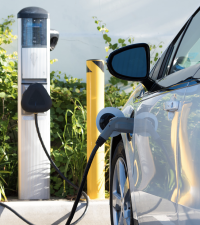Pacific Gas and Electric (PG&E)’s CEO Patricia Poppe has finally said out loud what every sensible skeptic had predicted, she plans – one day – to use fully charged electric cars to send excess power back to the grid to prevent blackouts. Breitbart
Right now, a few cars like the Ford F-150 Lightning already have bi-directional charging and all General Motors electric vehicles are expected to follow suit. Until now they have always sold it as a way to power your own home in an emergency – using your car to power fridges, A/C and essential equipment like CPAP machines.
But Poppe now says that the technology can go even further by also sending that excess power to the grid, except that, the interconnection is not there yet.
Sure hope 1) EV connectors have surge protection for reversal in power transfer; 2) insurance companies prepare for the claims when an #overcharge occurs damaging an #EV. https://t.co/idn3Rf5eFr
— Hawk06 (@hailsull) August 11, 2023
Don’t worry! “Right now today, there is no technology and no automotive manufacturer whose cars can actually send power beyond the home and up into the grid,” said Mark Toney, of Turn (The Utility Reform Network).
But that doesn’t mean it won’t eventually happen, says Kurt Johnson of the Climate Center. San Diego has a pilot program with school buses using bi-directional charging that feeds into the grid at the end of the day. “It’s a gigantic unharnessed, untapped power source that can be used. Most vehicles are sitting parked, unused 95 percent of the time,” added Johnson.
As an emergency home electrical source, EVs are an attractive option. The Silverado for example has more than 200-kWh of battery capacity. Starting from a full charge, it could fully power an average home for 5-6 days and still have 100 miles of range to be able to drive somewhere with power for a recharge. With reduced use of energy in the home, it could probably go over two weeks. Even a vehicle like the Chevrolet Equinox EV will likely have enough energy to power a home for at least 1-2 days with plenty of reserve.
The industry is working on ways to pay EV owners for their grid contribution. Which is all very well when it’s your decision to reverse the flow. Once it’s a “greater good” redistribution of power, seized by the utility whether you like it or not, that’s a whole different kettle of fish. And if anyone doubts they wouldn’t do it, I give you Kelo v. City of New London, an eminent domain theft to generate more taxes for local government.
Epoch Times: Remember, recharging your battery is what kills your battery, and once your battery is dead, it’s cheaper to buy a whole new car than to replace it.
Advocates for this nonsolution say electric vehicle owners will be compensated. Does anyone believe that compensation will be anything close to fair? Will they be compensated for having to replace their battery early? Will they be compensated for the inconvenience?
And let’s not forget that California has already passed a ban on selling gasoline-powered vehicles in 2035. So you will all be forced into this fascist program that allows the government to enter your house and rob you of your labor and time.
Great Forbes piece here. Breitbart here.
